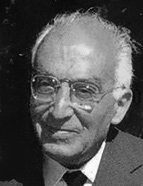

‘Aljubarrota was the culminating moment, the top of the mountain that had been climbed since the end of 1383.’ The historical construction of SDA shows, in multiple contexts, the scientific knowledge acquired at the School of Medicine. However, he also published works where the intersection of the historian ’ s and physician ’ s skills is particularly striking. In the same year that he argued his undergraduate thesis, he published an article in the Revista Portuguesa de História [Portuguese History Magazine] entitled ‘ Flechas com erva na guerra entre Portugal e Castela no fim do século XI ’ [Arrows with grass in the war between Portugal and Castile at the end of the 11 th century]. In a text dedicated to a war technique used by the armies of Castile, the documentary descriptions of the symptoms of the soldiers shot by the poisoned arrows are analysed , and the deadly herb used by the Castilian armies, wolfsbane, a plant found in Portugal, in the region of Trás-os-Montes, is identified. This is a well-grounded scientific text that could only come from the pen of someone who mastered knowledge drawn from History, Botany, Medicine , and Pharmaceutical Sciences.
As for his doctoral thesis, A Crise Nacional dos fins do século XIV. A sucessão de D. Fernando [The National Crisis at the end of the 14 th century. Ferdinand’s succession.] , one should pay attention to what is written in the author’s curriculum vitae dated 1960: ‘This work, developing the ideas set out in the former, consolidates a real turning point in the historiography of the crisis. The people ’ s candidate, even in D. Fernando ’ s time, was Prince João, son of Pedro and Inês de Castro – an attitude that was entirely logical as long as (and this was the case) D. Beatriz was not considered to be entitled to the throne: once the direct line was extinguished, the collateral line would have been taken, and the Prince was right at the top because he was considered an illegitimate son of D. Pedro, just like Fernando. However, the Prince was in Castile and imprisoned by the king and, in his absence, his bastard brother, Mestre de Avis, was the leader of the upheaval in December 1383 – an upheaval he led in the name of the absentee, who was later overruled by the brother that represented him. But the Prince ’ s party did not die with the rise of the Mestre de Avis to king. It carried on beyond the Coimbra courts of 1385, ending with the Prince ’ s death and his brother Dinis being given the dignity of king of Portugal in exile – a king, a government in exile. Before this new way of looking at things, it was common practice, when discussing the crisis at the end of the 14 th century, to barely mention Inês de Castro’s children.
This work is financed by national funds through FCT - Foundation for Science and Technology, I.P, in the scope of the projects UIDB/04311/2020 and UIDP/04311/2020.
